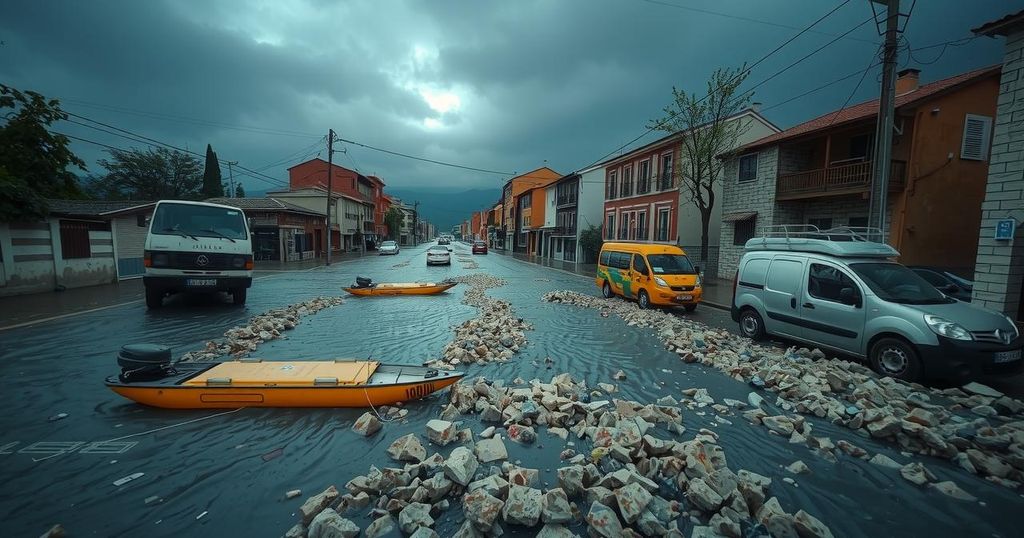Understanding the Devastating Floods in Spain: A Tragic Catastrophe

Severe flash floods in eastern Spain resulted in at least 158 deaths, predominantly in Valencia, marking it as the deadliest natural disaster in modern Spanish history. The floods, triggered by a sudden downpour, swept away vehicles and trapped residents, leading to extensive loss of life and property. Scientific analyses suggest connections to climate change as contributing factors. Recovery efforts are ongoing amidst significant infrastructure challenges.
In Spain, a catastrophic series of flash floods resulting from severe downpours have claimed the lives of at least 158 individuals, with the majority occurring in the eastern Valencia region. The floods struck with alarming suddenness on October 31, 2024, engulfing vehicles, homes, and businesses, trapping many and leading to an unprecedented loss of life. In just a few hours, the relentless rainfall transformed urban and rural landscapes, particularly affecting areas near the Magro and Turia river basins. Eyewitnesses reported scenes of individuals stranded on car roofs, desperately seeking refuge from rising waters. The national meteorological service noted that the volume of rain in the hard-hit locality of Chiva exceeded that of the previous 20 months combined, describing the deluge as “extraordinary.” As of the latest reports, emergency services have recovered 158 bodies, with search efforts ongoing for further missing persons. Residents are now faced with the daunting task of recovery, dealing with widespread power outages, and cleaning up thick mud and wreckage left in the wake of the floods. Witness accounts indicate that many victims were caught unaware as they were commuting home, with the flooding turning low-lying areas into death traps. Scientific analysis attributes these devastating floods partly to climate change, highlighting factors such as warmer air promoting increased rainfall and alterations in the jet stream contributing to extreme weather patterns. The phenomenon known as a cut-off lower pressure storm system, which has stalled over the region, played a crucial role in this disaster. Additionally, the Mediterranean Sea reached record warm surface temperatures shortly before the flooding, further exacerbating conditions. While the Mediterranean coast of Spain has historically experienced autumn storms capable of causing flooding, the scale and intensity of this event surpass previous occurrences. Notably, residents in affected areas have drawn parallels to a similarly disastrous flood in 1957, which led to significant fatalities and prompted infrastructure changes to mitigate future occurrences. The current floods represent Spain’s deadliest natural disaster in recent history, eclipsing the tragic Biescas flood of 1996.
The unprecedented floods in Spain are attributed to a combination of extreme weather dynamics and climate change. Flash floods, characterized by rapid onset and devastating impacts, often occur in regions with a history of autumn storms. This particular event, however, stands out as one of the most severe in living memory, marked by an extraordinary amount of rainfall that overwhelmed communities across eastern Spain. As climate scientists continue to study the implications of climate change on weather patterns, the recent floods serve as a stark reminder of the increasing vulnerability of regions worldwide to natural disasters.
In summary, the recent flash floods in eastern Spain have resulted in a tragic loss of life and extensive property damage, largely attributed to extreme weather exacerbated by climate change. As recovery efforts continue, the need for preparedness and resilience in the face of such natural disasters is more critical than ever. The events of October 31, 2024, will likely have lasting impacts on the affected communities and highlight the necessity for future infrastructural adaptations to cope with increasing weather volatility caused by climate change.
Original Source: apnews.com







